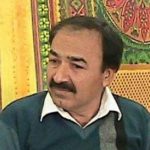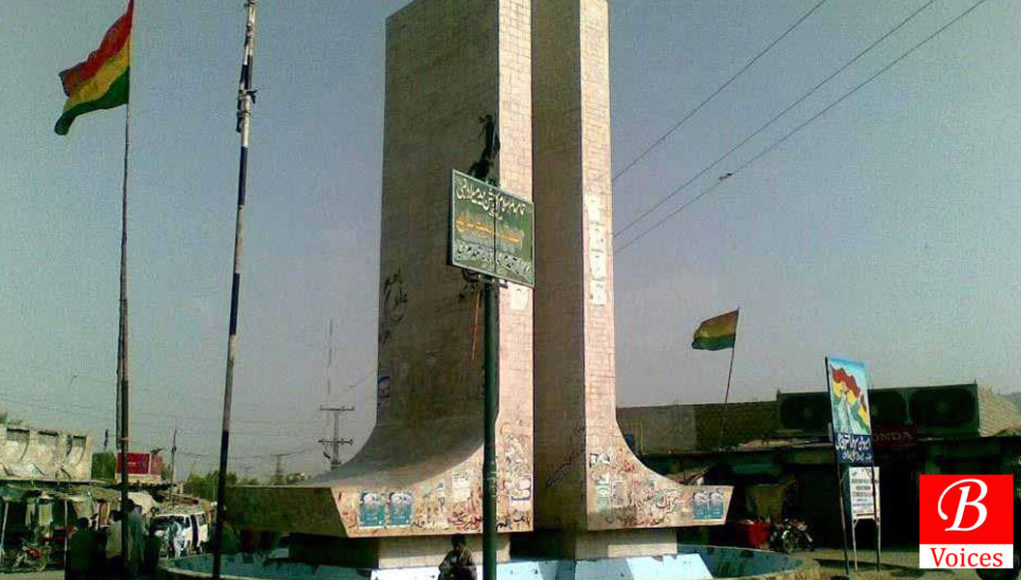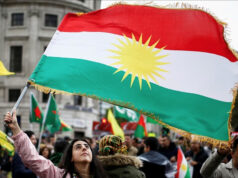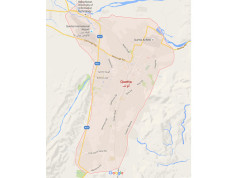 Sultan Ahmed Shahwani
Sultan Ahmed Shahwani
Balochistan is a land of mysterious collection as many parts of it are still unexplored or have been out of the access of historians. One such place is Khuzdar, the center of Jhalawan, Ancient name of the valley staring from Soorab in north to Shah Noorani in South and from the boundaries of Kuchhi to and including Mushkay in the west.
A major and important portion of the history of Khuzdar and of whole Jhalawan is still uncovered as whatever has been written by the historians so far that do not cover what the soil of Jhalawan presents herself. It wonders that why the mysterious DRAKHEL with lot of epitaphs engraved on this lofty peak, the soil of mounds, Moola, the historical sites of GAAj, the splendid remnants of Marree could not get the attention of the historians. Similarly the giant dykes locally known as GOR BUNDs spreading all over and which are an ample testimony of the agrarian society of Jhalawan, also left unmentioned.
Khuzdar has been recognized with different names in the history. The very first name has been KUZDAR (The silk producing place) which later renamed as KHUZDAR by Umero Ibn Abdullah who was the Governor of Gundawa (In history known as QUNDABEL). It was the beginning of Islamic rule in these area in the almost middle of 48 A.H. when the governor was visiting Khuzdar via Moola valley and at the very first look at Khuzdar he was so impressed with the scenic beauty of this land that he declared ‘’MA HAAZA KUZDAR, HAZA KHUZDAR’’ .(It is not a pace of silk but a placed which owns the people forever) the word KHUZDAR has been derived from Arabian word KHUZ, (to take, to own or to accept forever and the Persian word DAR (place). So the meaning of Khuzdar is A PLACE WHICH OWNS THE PEOPLE AND IS OWNED BY THE PEOPLE. The Governor ordered the shifting of capital from Gundawa, to Khuzdar on the very same moment.
We read Khuzdar for the first time in the history when Aryans invaded this land. It was the time when the Dravidians were living in this whole area. This attack which took place around in year 1600 B.C., forced the Dravidians for a massive migration to southern India but out of twenty six (The historian Krishna Moti has declared them 22 whereas Dr. Abdul Razaq Sabir counts them as 26) Dravidians groups, only one group i.e. Brahvi preferred to stay in and encounter the Aryans attack. Since the Brahvis were well acquainted with the ins and outs of the area, so they made the things warm for the invaders through guerrilla attacks and forced them either to quit or to convert. It is believed that the shrine therapy and scarification of goats and sheep on shrines as a mark of sanctity, was introduced by the Arians in this society. We also read about Khuzdar when the army of Alexander Great was on her way back from southern India to Hirat in 322 B.C. One of his famous generals, Kertrus passed the area through Moola valley which was a main route of the time. After the demise of Alexander in 323 B.C, at Babul, the famous general of Alexander, Calicos Nectar took the charge of this whole area but he was defeated by Chunder Gupt Mooria just after one year of his government. Calicos yielded and agreed to pay in tribute a heavy amount including five hundred elephants and also handed over Hirat and Balochistan to the conqueror. This was here that the religion of Budhmuttook its roots here.
Khuzdar was conquered by the Arabs during the reign of Ameer Muawya (R.A) but the strategic information collection for the conquest of Khuzdar had been started much before during the later part of the reign of Hazrat Umer (R.A). The task to conquest Khuzdar was assigned to Hazrat Sunnan Bin Salma, a famous Muslim General who had already commanded successfully the military campaigns of Makran and Kalat with the help of Assim Bin Umer and Abdullah Bin Aamir. Hazrat Sunnan Bin Salma was well acquainted with the geography of the area and the martial strateg yand bravery of the people. So he accomplished the assigned task successfully. Although an uprising happened after the conquest of Khuzdar but soon he controlled everything. He was a thorough general but a man of soft temperament. His fighting spirit, material vigor combined with statesmanship qualities considerably helped him not only in the conquest of Khuzdar but also in the administration side as well which led him to the peak of glory and renown. He had his own way to win the heart of the people and it is because of this that an influx of the people of Jhalawan embraced Islam. Hazrat Sunnan Bin Salma preferred to stay in Khuzdar and breathed his last near Poorali and he is sleeping his eternal sleep at Kherawa in Khuzdar where the people even today visit his shrine to pay tribute to this great general and unparalleled preacher of Islam. After Arabs, Khuzdar fell into the hands of Subaktageen in 977 AD and then to his son Mehmood Ghaznavi. But the people of Khuzdar started uprising against them which Ghaznavi crushed with a heavy hand. After ghaznavi dynasty, Khuzdar was ruled by Yaqoob Bin Nafees Safari for a short time when the government was snatched from Safaris by Chughtai, the son of Cahngez in the year 1223 AD. But soon after, in 1225 Sultan Shams-udDin Alitmish caprured Khuzdartill Arghooni period which started in 1517. They were followed by Mughuls and Mirza Kamran became the Governor of Khuzdar. Soon he was dethroned in 1511 Mirwanis captured Kalat and made Khuzdar a part of Kalat. The Mirwani Government is known in history as Brahvi Government which went on till Kalat State joined Pakistan after 14th August 1947.
The history of Khuzdar is not considered to be complete without the mention of Rabia Khuzdari who is also known as BULBUL-E-KHUZDAR. Rabia Khuzdari was from royal and her father Ameer Ka’ab was the governor of Khuzdar. But her fame rests in her poetry in Persian which she did some thousand years ago. She was contemporary of Rodkey and both are considered as the pioneer of Persian Poetry. She fell in love with an expelled prince from Central Asia, Bakhtus who was working as an assistant in the office of her father. Soon they lost the secrecy of their love as one of the slaves broke the box of Bakhtus and handed over them to the brother of Rabia Khuzdari, who had joined as governor after the death of his father. He became furious at this and considered it a filthy blot at the honour of the family. He confined Rabia Khuzdari in the royal bathroom and cut her jugular vein where she remained till her death. But she starting writing her poetry with her blood on the walls of royal bathroom. Her poetry is a real embodiment of her sorrowful life. Bakhtus was also killed and buried at place much away from the royal house. The graves of both are existing even today and people from farther areas visit their grave regularly.
Khuzdar is the center of Balochistan and enjoys an important geographical position it has the potential in agriculture and a heavy deposit of mines like barite, chromite onyx and Verona. The CPEC route will pass through Khuzdar by making it a junction point and it guarantees a prosperous and rapid developing Khuzdar as the glorious its past has been.
Share your comments!








